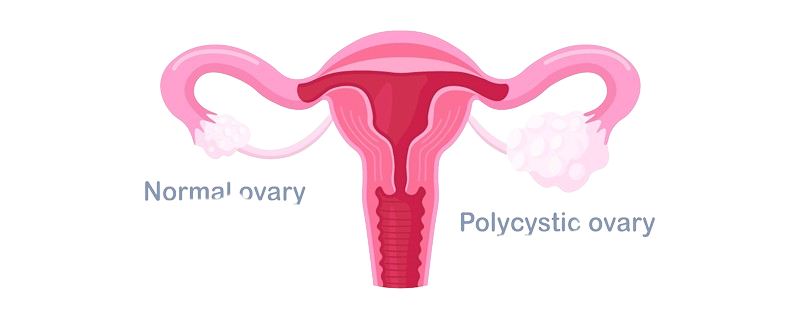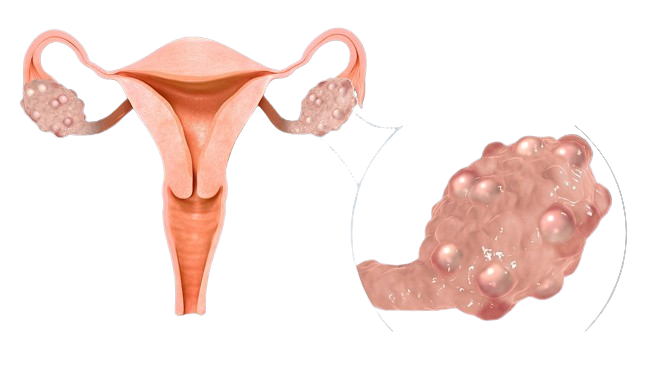Know Everything About PCOD vs PCOS
When it comes to women’s health, PCOS and PCOD are frequently used interchangeably, making it difficult to distinguish between them. Since these two conditions have different effects and treatments, it is essential to understand them both. In this blog, let’s dissect the difference between PCOD vs PCOS causes, symptoms, and treatment.What is PCOD?
Polycystic Ovarian Disease, or PCOD for short, is a long-term medical condition in which your two ovaries gradually produce immature or partially mature eggs, which build up to a significant quantity. These eventually develop into ovarian cysts, which enlarge the ovaries. Your ovaries release more male hormones as a result, which can lead to infertility, abnormal weight gain, irregular menstrual cycles, and hair loss. Normally, one of your ovaries releases fully developed, fertile eggs each month. However, this mature egg release is eliminated when you have PCOD, and your ovaries will frequently release immature eggs. Furthermore, a person with PCOD produces excess androgen during each cycle, whereas normally, this hormone is only released in small amounts.
What is PCOS?
Polycystic Ovarian Syndrome, or PCOS, is a metabolic disorder that can impact women between the ages of 12 and 51 by causing an imbalance in hormones during their reproductive years. On the outside of your ovaries is a cluster or collection of tiny fluid sacs called cysts associated with this dangerous medical condition. Follicles, or immature eggs, are found inside the cysts but cannot release eggs regularly. In addition to the excess production of the male hormones androgens, this medical condition causes multiple hormonal imbalances that disrupt your menstrual cycle and cause irregular or absent periods for several months.What are the common signs of PCOD and PCOS?
PCOD and PCOS share many signs and symptoms, making them easily mistaken for one another. However, you must recognize that these are two distinct medical conditions, with the latter being more serious. Just before delving into their distinctions, let us examine some typical symptoms of PCOD and PCOS that may give them the appearance of being identical: – Uncontrollably gaining weight – Abnormalities in the menstrual cycle – Weight gain Acne on the face, chest, and upper back – Heart disease risk as a result of the metabolic syndrome’s induction – Overgrowth of hair on the face, back, chest, and abdomen – On the scalp, hair thinning or loss – Missing or not having a menstrual cycle – Darkening of the skin under the breasts, on the neck, or in the groin.What are the Causes of PCOD and PCOS?
While the precise cause of PCOD and PCOS remains unknown, certain factors are thought to be involved in the development of these conditions. These elements could consist of the following.– InsulinResistance:
Compared to other women, women with PCOD or PCOS have higher levels of insulin resistance, which makes their bodies less responsive to insulin. This implies that they need higher insulin doses to keep their blood sugar levels normal, which results in elevated levels. As a result, PCOS or PCOD is caused by stimulating the ovaries to produce more androgens, the male hormones.– Genetics:
If these conditions run in your family, you might be carrying the genes that can lead to PCOD or PCOS developing in your body.– Hormonal Imbalance:
Your body may develop PCOS or PCOD as a result of several hormonal imbalances. These imbalances result from the low production of progesterone and the high production of androgens.– Environmental Factors:
PCOS and PCOD can also result from exposure to environmental pollutants such as phthalates and bisphenol A (BPA).– Inflammation:
It is also recognized that a persistent state of bodily inflammation plays a significant role in these health issues.What are the treatments for PCOD and PCOS?
The best treatment for PCOD and PCOS involves making lifestyle adjustments, such as eating a healthy diet and exercising moderately to lose weight. Treatment is also based on PCOD PCOS symptoms, including acne, excessive hair growth, and metabolic syndrome. Here are a few possible courses of action: – Injections and oral drugs to induce ovulation – Medications for fertility used to treat infertility – Limiting the growth of too much hair – Acne treatment for the skinMost Suitable Diet Plan For PCOD And PCOS
Treatment for PCOD and PCOS is significantly influenced by diet. When women with PCOD or PCOS lose weight and follow a healthy diet, their ovulation rates increase dramatically.– Balanced Diet:
Both PCOD and PCOS can benefit from a balanced diet that includes a variety of nutrient-rich foods. Focus on consuming whole grains, fruits, vegetables, lean proteins, and healthy fats for essential vitamins and minerals.– Low Glycemic Index (GI) Foods:
PCOD and PCOS are often associated with insulin resistance, which can lead to high blood sugar levels. Incorporating low-GI foods such as whole grains, legumes, and non-starchy vegetables can help regulate blood sugar levels and improve insulin sensitivity.– Fiber-Rich Foods:
Fiber is essential for managing weight and promoting digestive health. Include plenty of fiber-rich foods like vegetables, fruits, legumes, and whole grains to help regulate bowel movements and promote satiety.– Healthy Fats:
Incorporate sources of healthy fats such as avocados, nuts, seeds, and fatty fish into your diet. Healthy fats help support hormone production and reduce inflammation in the body.
Conclusion
SLG Hospitals is known as the best hospital in Hyderabad. We are committed to supporting women through every stage of their journey, from diagnosis to treatment and beyond. Our multidisciplinary approach ensures patients receive personalized care that addresses their unique needs and concerns. We invite you to schedule a consultation with our team to learn more about our services, the best Endocrinologist in Hyderabad, and how we can help you manage PCOD and PCOS effectively. We are the top gynecologist hospital in Hyderabad. Together, we can navigate the complexities of these conditions and work towards optimal health and wellness for every woman.
Post Views: 965















